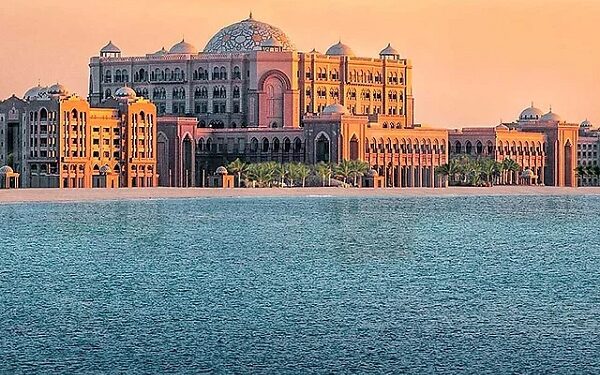Friday, April 5, 2024

When it comes to getting noticed, few places do it with as much aplomb as Abu Dhabi.
When Mission: Impossible – Dead Reckoning made its debut less than a year ago, millions of cinemagoers around the world got a taste of what the UAE capital had to offer, not least the brand-new terminal at its main international airport that was the backdrop to the film’s high-octane tale of international espionage.
In a similar vein, the futuristic dystopia of the Dune sci-fi blockbusters has brought the emirate’s majestic Empty Quarter to a global audience. The emirate’s commitment to high-profile Hollywood projects such as these speaks volumes about its visibility and connection with the rest of the world.
That enthusiasm for developing Abu Dhabi as a travel destination received an important boost this week with news of a $10 billion investment in the emirate’s infrastructure that’s intended to support its 2030 tourism strategy, which includes ambitious goals to boost visitor numbers to 39.3 million and increase the sector’s GDP contribution to Dh90 billion ($24.5 billion) within six years.
But those who will get the most from these developments are not the visitors who come and go – it will be the people who live and work here.
Firstly, this ambitious investment plan does not just involve the tourism sector – it is a collaboration involving government departments responsible for culture, economic development, municipal services and transportation, among others.
That means, as the tourism strategy states, enhancing Abu Dhabi’s roads, public transport and infrastructure.
Improved connectivity and services are good news for citizens and residents, as is the positive effect of directly and indirectly creating nearly 180,000 jobs.
The $10 billion investment will also contribute to Abu Dhabi’s continuing work in transforming perceptions of Gulf travel from one dominated by glitz and glamour to one that is also culturally enriching, sustainable and – importantly – affordable.
This process is already underway; last year the emirate removed a 6 per cent tourism fee and 4 per cent municipality fee applied to hotel restaurants.
The 2030 strategy’s goal of boosting the number of hotel rooms to 52,000, from the current 34,000, will include options to suit all kinds of budgets.
Abu Dhabi is also increasingly keen to share its cultural wealth with the world – the UAE capital is already home to Louvre Abu Dhabi, the Abrahamic Family House and the Sheikh Zayed Grand Mosque, to name but three current cultural offerings.
The Guggenheim museum on Saadiyat Island is progressing and Abu Dhabi is also preserving its modern heritage, with plans to install more than 60 plaques at landmarks across the emirate.
Such large-scale investment and planning are timely, arriving at a moment when countries are increasing air connections with Abu Dhabi, a single GCC visit visa is in the works and the emirate’s increasingly year-round appeal is making the stereotype of a ‘dead’ season from June to September increasingly redundant.
Not everyone who visits Abu Dhabi will be guaranteed a thrilling chase across the roof of Zayed International Airport or a ride on a sandworm in the Empty Quarter, but there will be plenty for everyone – tourists and residents alike – to experience.
Tags: Abu Dhabi
Monday, April 29, 2024
Monday, April 29, 2024
Tuesday, April 30, 2024
Monday, April 29, 2024